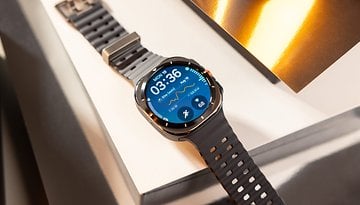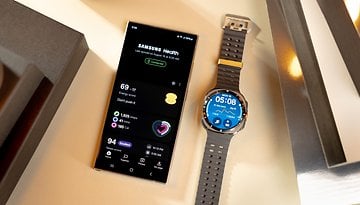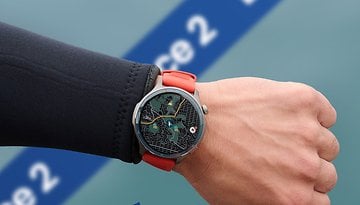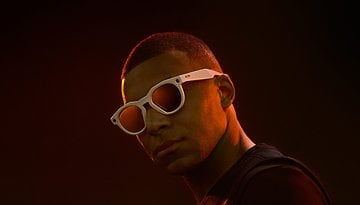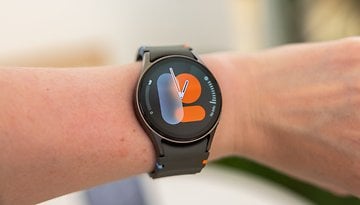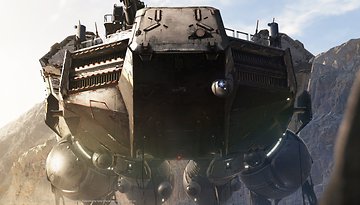From Gaming to Tactical Training: Hologate's VR for Real-World Scenarios
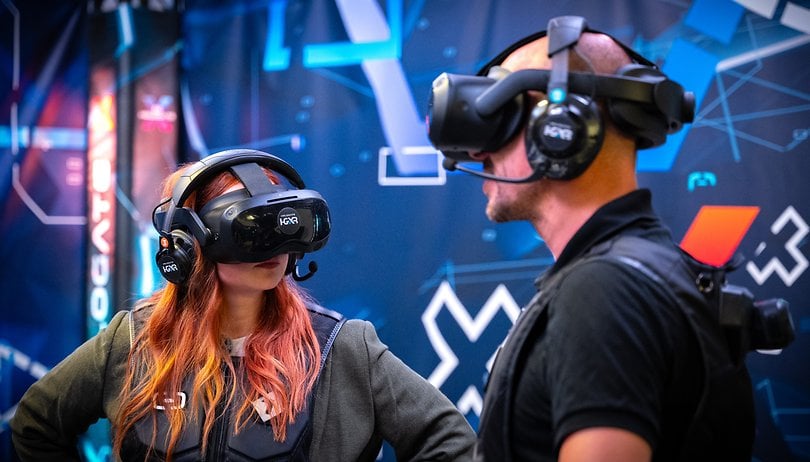

We stand in front of a door of an apartment building and don't know what's behind. A stranger is allegedly holding hostages in the apartment and threatening them with a knife. After ringing the doorbell several times, we kick the door down. I lean against a door frame and suddenly lost my balance, realizing that none of this was real! No, we weren’t experimenting with the latest party drug trends—instead, we visited Hologate, a company that develops ultra-realistic VR environments under the name “HGXR,” allowing security forces to train safely. Let’s talk about this often-overlooked aspect of VR technology!
Even while I was a wee lad, I was already familiar with military life. My father was stationed in a barracks not far from where I grew up, and I regularly made trips to this strange parallel world during my childhood, where everyone wore green clothing and greeted each other with a salute.
Even though my father's camouflage uniform always caused laughter in kindergarten, I knew very early on that things ran in an orderly manner and, above all, life was very serious in a barracks.
As an institution, the military or any security forces know this: never let members forget what it is all about: in an emergency. There might come a time when you are faced with a really difficult situation, such as defending yourself against someone else who wants nothing more than to end your life.
How do you defend yourself with a firearm? It sounds absurd that such a scenario can be reproduced in a “game” with the necessary gravity and realism. However, Hologate has been working on an idea since 2013 and, according to its statistics, has achieved very positive results to date.
Six sensors, VR technology, and a vibrating vest that delivers electric shocks
We visited Holodeck in Munich, Germany, in August. Their headquarters occupy several floors in an industrial area. A dedicated simulation environment for VR training is located in the basement of the industrial building. The virtual room where Johanna and I were able to move around measured approximately 60 m² in size. However, the environments Hologate set up in other locations measure up to 1,000 m² in size.

This was made possible by a combination of sensors, computers, and powerful 5G routers. “Back in the day, we had to wear backpacks that held entire computers, but now the technology works wirelessly,” explained Leif Petersen, CEO of Hologate Germany.
The VR goggles receive simulated 3D environments from a powerful computing station via 5G modems. The latency is low enough to provide an immersive and, most importantly, dizzy-free VR experience as soon as you put them on.
According to Hologate CTO Jan Ottens, who spent many years in a special operations unit of the German Armed Forces himself, most participants took just a few seconds to get used to the experience.
However, what brings immersion to a whole new level compared to conventional VR goggles is the ability to freely move around the room. Arms and legs are tracked by sensors, while another sensor sits above a vest that can provide haptic feedback via vibration motors.
For instance, when shots are fired or contact is made with objects, you will feel the registered presence. In addition, (which we were fortunate enough not to have tested it), the vests can also provide feedback via electric shocks. Hurray for occupational safety!
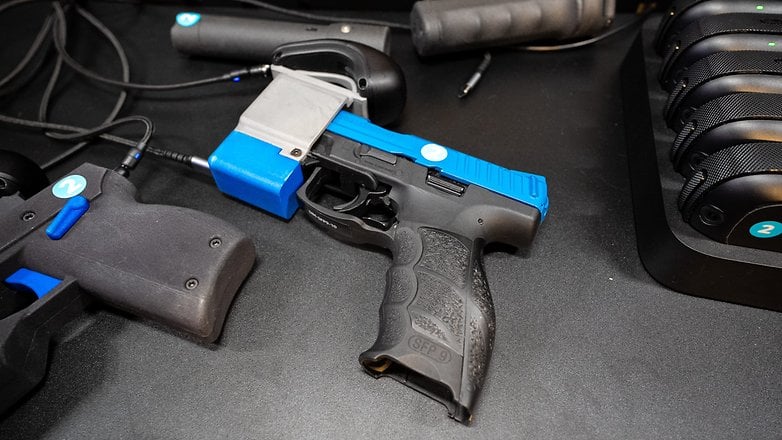
Back to the topic: for better or worse, it is also important to simulate the use of firearms during testing. To this end, Hologate produces its own firearm replicas, which then simulate recoil via gas cartridges or electric motors. The fake firearms in turn contain sensors that can be used to track their position in the virtual space. This leads to a major advantage of the simulated missions.
In the subsequent debriefing, incident commanders can inform participants precisely how they behaved in the training scenario. As mentioned at the beginning, we were dealing with a hostage situation, and one of the most critical things here is not to point your weapon at the hostages.
This is precisely what we were able to understand afterwards during the debriefing. We also saw, for instance, how we checked the surroundings for potential danger and could even include our vital data via fitness trackers.
This is how classic military training works
Simulated combat situations in the military or security forces work in a far more fluid manner. For my article, I conducted an interview with my father, who is now retired but used to accompany Wolfgang Luck's exercises as a staff sergeant and, of course, took part in them himself. Basically, he told me there were two types of training that accompanied him in his day-to-day work after I showed him a video of Hologate's VR-simulated exercises.
Yes, there are shooting exercises that involve the use of live ammunition. These are carried out on a shooting range that is specially built so that it minimizes risk of injury or death. You shoot in one direction and the ammunition is caught in a bullet trap. Then there are also training exercises that are carried out in a battlefield environment, which is located outdoors in a training area:
"You have to imagine that you are shooting into the terrain. There is a safety area to the left and right that you are not allowed to shoot past. Projectiles really do fly through the area. But by observing restrictions and making sure that no one passes through, such exercises can also be carried out safely on military training areas.
Soldiers do not usually carry out exercises in the field—i.e., neither on a firing range nor on a combat range with live ammunition:
"If we don't do it on a firing range, then we do it in the field with ammunition called "practice ammunition". This tricks the rifle, so to speak. You put on a "maneuvering cartridge device" and it virtually simulates a shot. Nothing flies around, but you have the feeling that you are firing. Nevertheless, shooting at people is a serious breach of security."
There are times when military training exercises are performed in a stationary position. Two people normally accompany the shooter. They observe “how the person handles the weapon, whether they are loading it correctly, what the shooting rhythm is like, and whether their breathing is controlled.” These characteristics, which are intended to ensure safe and accurate shooting, are discussed in person and subsequently evaluated.
Shooting exercises are not aimed at actors or people. This has to do with the fact that “Nothing should happen” and “It should become second nature to not aim at people for fun.”
Not aiming at people for fun, even in a VR environment?
This was exactly the question I was eager to explore before my appointment with Hologate. In other words, could the boundaries between “VR training” and “VR gaming” become blurred?
Before the meeting, I joked about whether we might end up shooting butterflies with soap bubbles. I must admit, I didn't do any military service, and I'm rather pacifist by nature. Nonetheless, I have a deep respect for the simulated training scenarios.
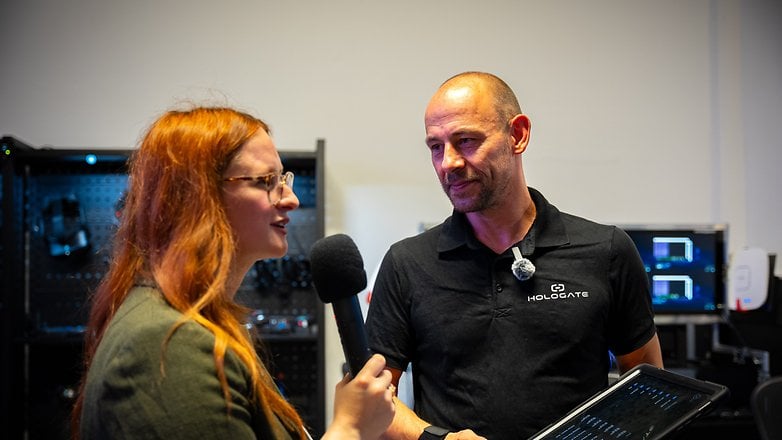
This is because I know the initial reactions one can observe when placing people in game situations that involve virtual weapons. The initial reaction is to see what happens when I shoot my buddy, or a chicken, in popular Counter-Strike maps from the old LAN days. Children also have this reaction when you put a “game weapon” in their hands.
One of the very first things they do is to point the firearm at another person and laugh about it. There appears to be some kind of stimulus involved. Attempts to explain this in science range from power to the “myth of man” to a childish attempt to understand death.
In the VR trainer, none of us had the impulse to point our virtual guns at anyone. This was partly due to the professional introduction given by Jan Ottens from Holodeck, who also joined us in the virtual space. The first rule communicated when the fake weapon was handed over was that you don’t point it at people. In the Holodeck test scenarios, weapons were handled in the same manner as they would be in “real” training situations.
Staff Sergeant Lucks described a similar handling of weapons which are loaded with practice ammunition and are therefore similarly harmless in most cases. He described it as a “high-grade safety violation” should a soldier shoot at people with it or pretend to shoot. Safety is paramount, as harmless objects are treated as potentially lethal.
I believe that’s why the immersion and “belief in the simulated world” worked so well at Hologate. The moment we entered the training scenario, everything was taken seriously. With the VR glasses on, we were focused and tense. The strength of this illusion became especially clear when we were confronted with a particularly tricky situation that Hologate threw at us.
After a vehicle check where I had to get an “enemy” to lie down on the ground, we completed the task. As Jan and I chatted for a moment in a virtual reality environment and I looked at the graphics, an armed person suddenly appeared behind.
The game master had placed him there and, almost instinctively, my muscle memory was executed to perfection. In a computer game, I would have shot the virtual enemy directly, but here, I acted within the safety guidelines recommended by the simulation.
Simulation in virtual reality has a big advantage
Games always follow certain rules. We define these rules to make the situation as realistic as possible. As long as we don't break these rules, games can evoke real feelings and emotions and raise our pulse. That also applies to the HGXR training at Holodeck.
This became even clearer for Johanna and me when we shot like crazy at zombies in another simulator an hour later. It was clear from the beginning that we were doing this for fun and that we weren't imagining mowing down real people.
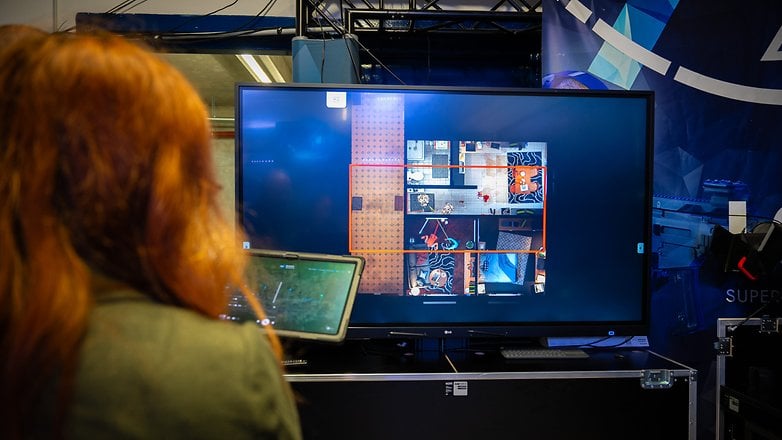
In the HXGR simulator, it's a different story if the incident commanders clearly define the rules beforehand. In our case, we perceived the virtual people as “real” people to a certain extent, as they were defined as such in our “game”. They were bystanders in a situation, and it was our job to protect them. Of course, abuse is also possible here, but what boils down is the intention.
What possibilities does HGXR training offer when used correctly? Tactical procedures in dangerous situations. There is also a “shooting theater”, a kind of digital shooting range where you have to tell the difference between danger (an armed man in a balaclava) and civilians (a mother with a baby carriage), for instance.
There are also tactical training opportunities for special forces. House-to-house combat, for example, often involves confrontations with opposing forces and can be practiced on military training grounds. Video cameras are already used to assess the action afterwards.
However, VR training enables a much more precise analysis of individual behavior in the field. This allows participants to better ensure the safety of one another and the virtual actors, who represent civilians.
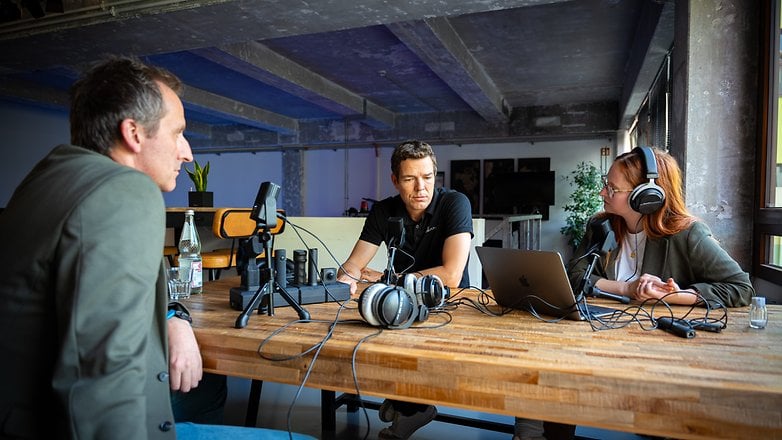
According to participant studies, Hologate's HGXR platform achieved a high percentage of success: 97% of participating soldiers saw added value for their “real” training. 85 percent of participants could better understand critical processes and 84 percent could assess situations better. In a presentation, Leif Petersen also mentioned 100 percent of participants would like to have this kind of training for their everyday work.
We, on the other hand, were relieved when we exited the virtual environment. While trying out the simulator was interesting and even fun to some extent, we consciously decided long ago not to pursue a career that involves firearms or the possibility of taking a life in self-defense. That said, the fact that we lost track of time while in VR highlights once again that VR simulations are not merely games.
They are an exciting opportunity to prepare people in a protected environment for situations in which routines and a cool head are essential for survival. Overall, VR is just another tool for training in a myriad industries. It is a double-edged sword, like many things in life, and it all boils down to how you use it and your intention.

